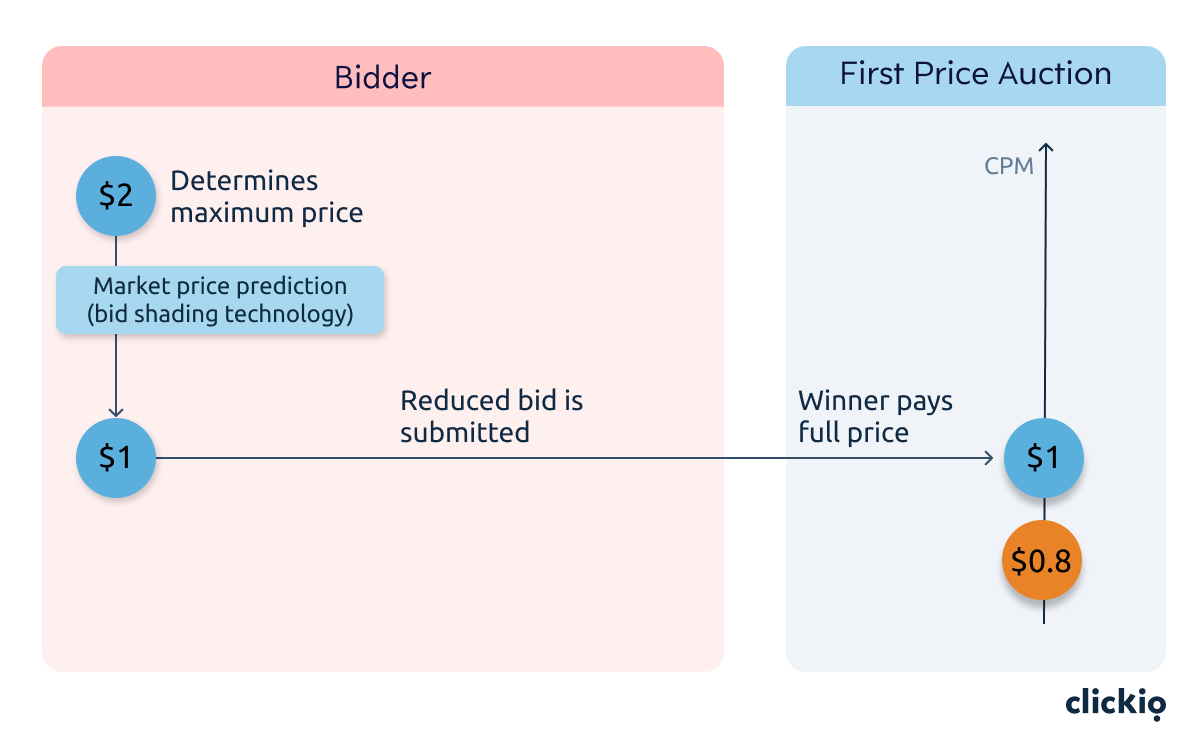Bid shading explained

After Google announced plans to transition 100% of its Ad Manager and Ad Exchange auctions to first price by end of 2019, many buyers are looking into strategies to bid and win effectively on first price auctions.
In this post we will give a quick overview of what bid shading is, and what effect it has on the programmatic market, and what can publishers do to avoid shrinking prices.
Summary
What is bid shading
Google has announced it´s shift to first price auction in an attempt to make programmatic auctions simpler. But the tech companies helping buyers win bids have come up with another layer of tech to try and maintain prices low while algorithms learn to bid in the new system.
This new technique is called bid shading.
Essentially, bid shading is a compromise between the price that would have been paid in second price auction, and the higher price proposed in the first price auction. The calculation of the final price is done by the tech partners, and uses AI to forecast the right price at which the bid will be won. This prediction involves collecting historical data on bids and win rates for very granular inventory segments (sites, ad units, devices and such).

The algorithm estimates the market rate at which bids are won for a determined publisher and grants the possibility of competing with the lowest possible bid. If win rates decrease, the bid shading algorithm will raise the price.
Why is bid shading being used
With second price auction, buyers were able to bid a higher amount because the final price was determined by the second higher bid, plus 1 cent, so they never had to pay the full amount they bid. With the the shift to first price auction, buyers will pay the price they bid, and this could potentially end with their budgets quicker. It is important for buyers to not overspend, but to also keep the win ratio high for their campaigns.
To combat the possible inefficiencies from one system to another, tech companies started offering bid shading as a solution. Although Google’s announcement is set to make a shift on the programmatic market, many exchanges had already began shifting their bidding mechanism years ago, and bid shading was one of the first introductions to keep buyers happy.
Before bid shading was introduced, many buyers couldn´t adjust their bids for a first-price auction and temporarily overpaid, which benefited publishers. Now, publishers are seeing CPMs fall back down, and stand to see further declines if bid shading algorithms continue to improve.
Does it benefit publishers?
First price auctions mean publishers get, in theory, higher rates from buyers. Before bid shading, many buyers didn’t know how to adjust their bids for a first-price auction and temporarily overpaid, which benefited publishers. However, the recent evolution of bid shading has shown an average 20% decrease of publisher CPM’s.
Publishers can still retain pricing control and manage yield using the right tools. A profitable mechanism publishers can use is setting price floors. If done correctly, adjusting price floors in Ad Exchange can have a significant positive impact on publisher’s revenues. The price floor puts a lower price limit for bid shading algorithms and the effect is similar to the second price auction, but the adjustment happens on the side of the bidder, not in the auction itself. You can read more about auction dynamics in our blog post on this.
Clickio is constantly developing tools and techniques to keep bids as high as possible for publishers, our product PriceLift works to avoid damage caused by bid shading and is available to all publishers.
